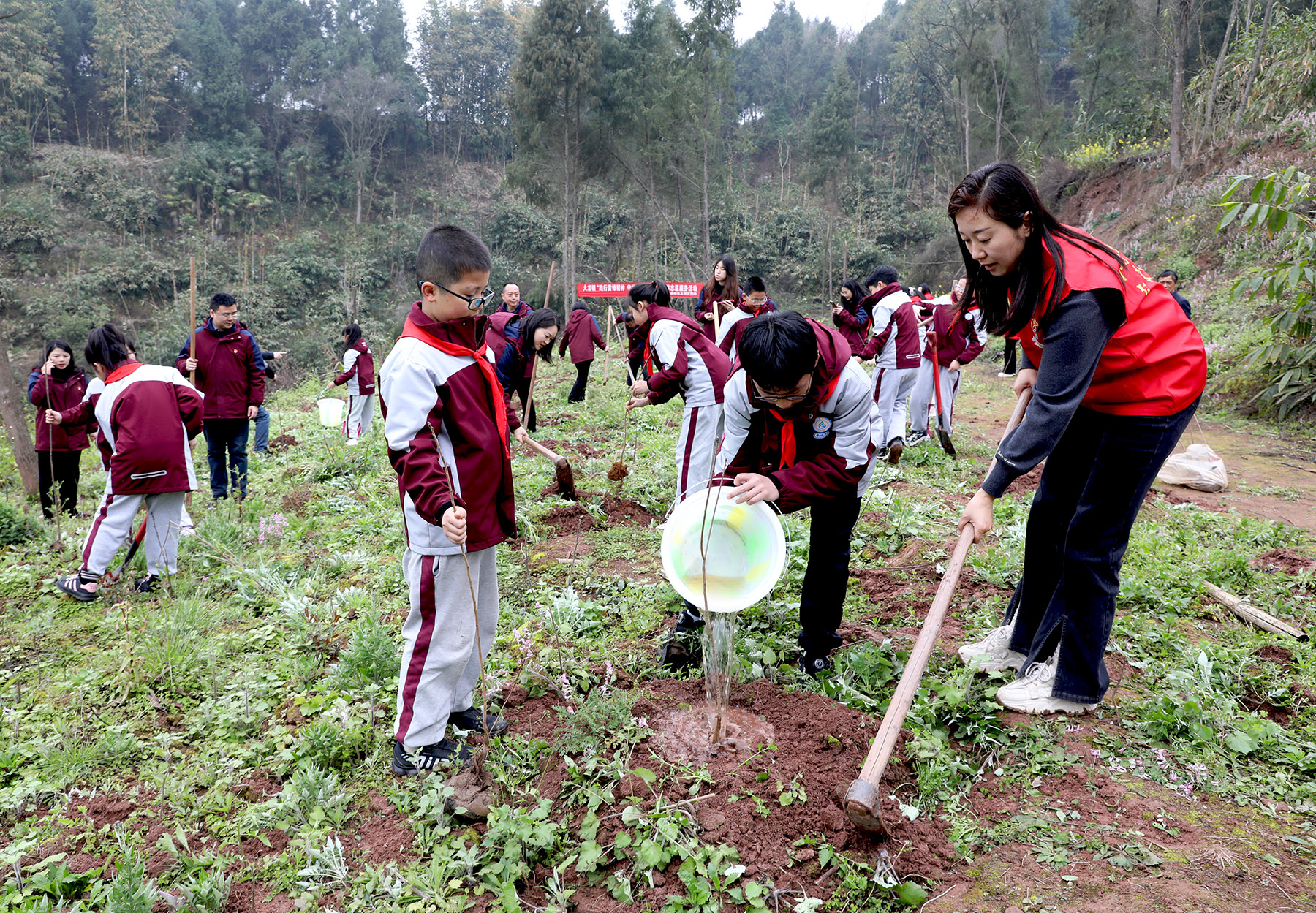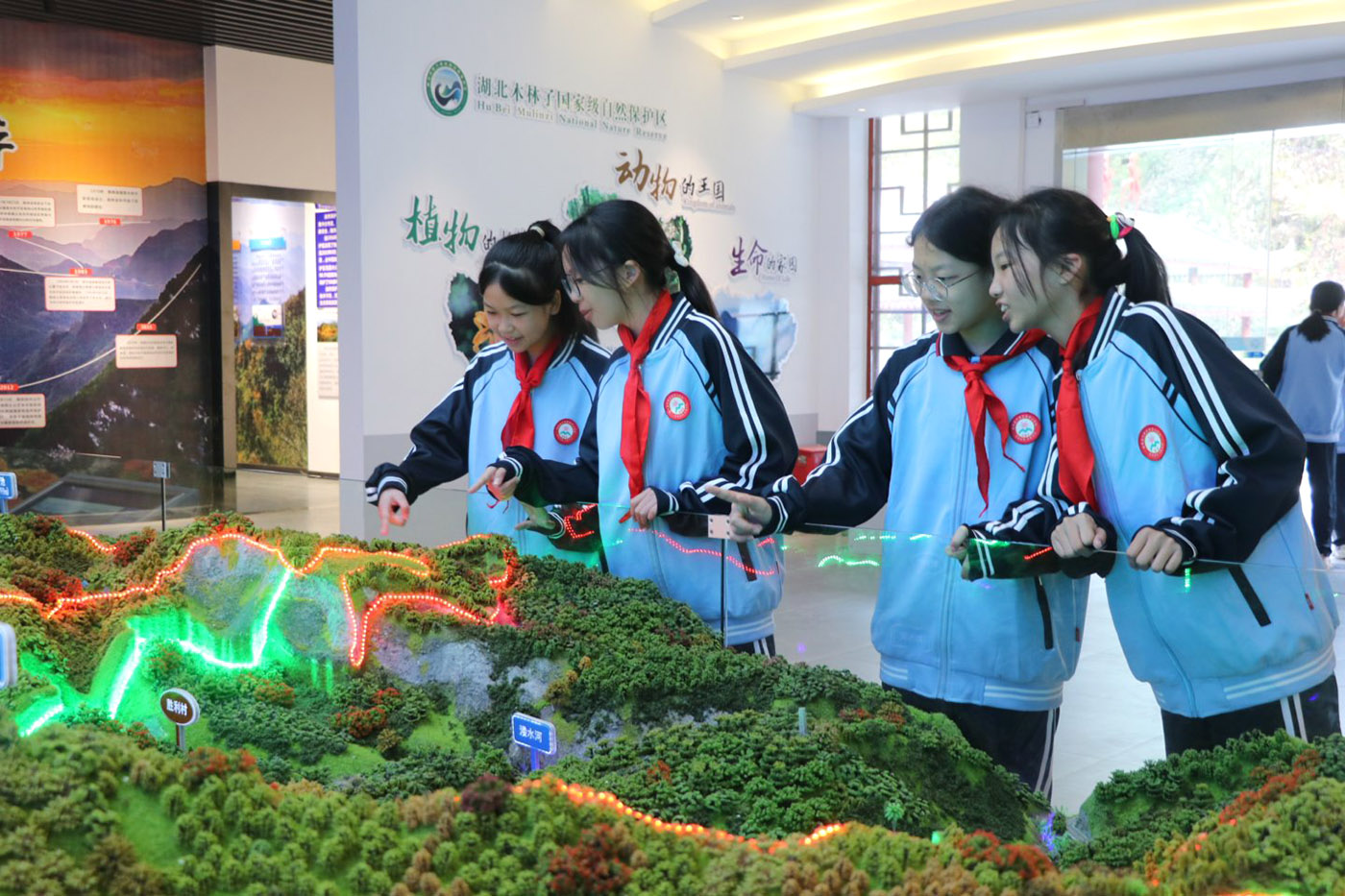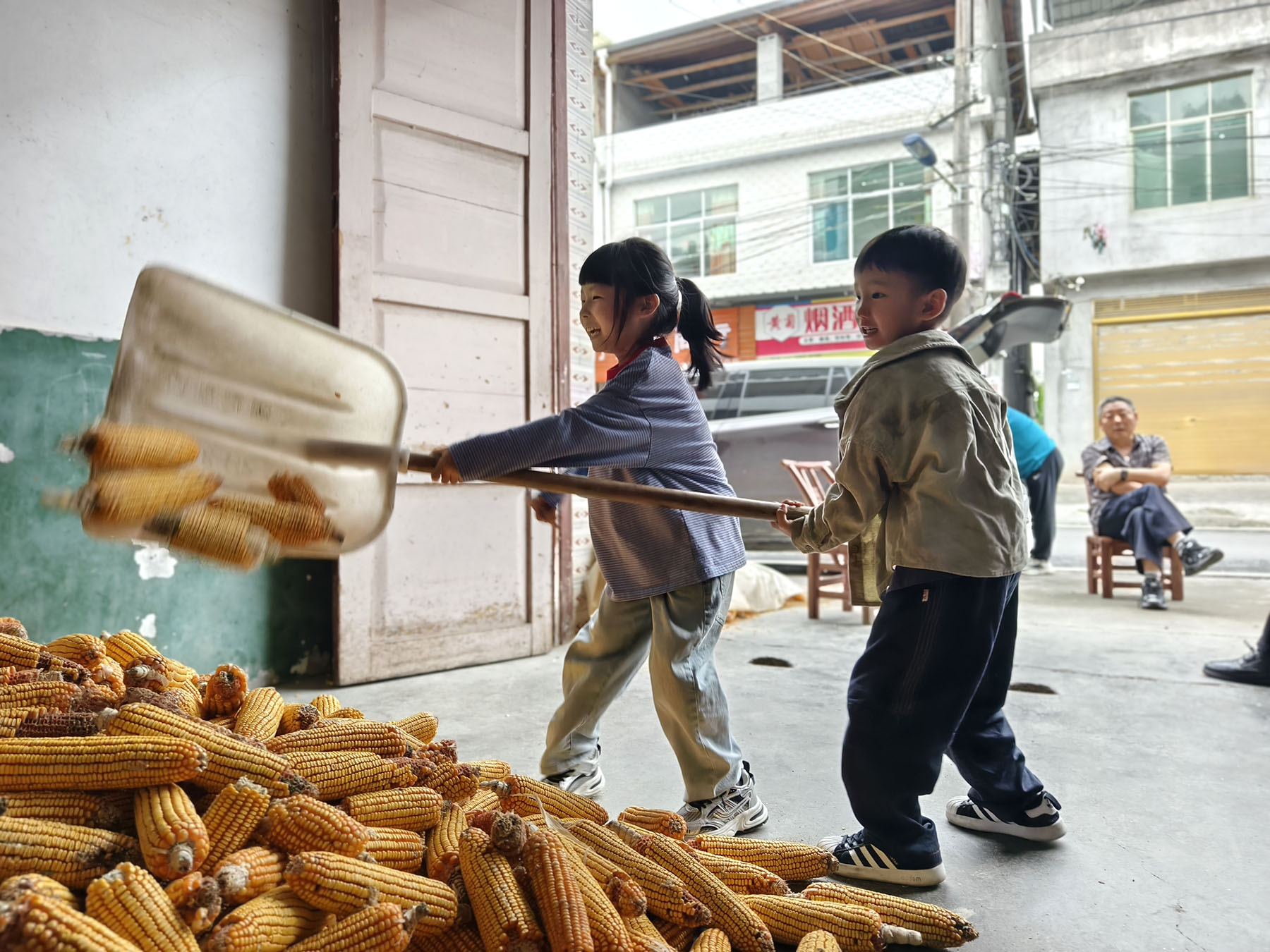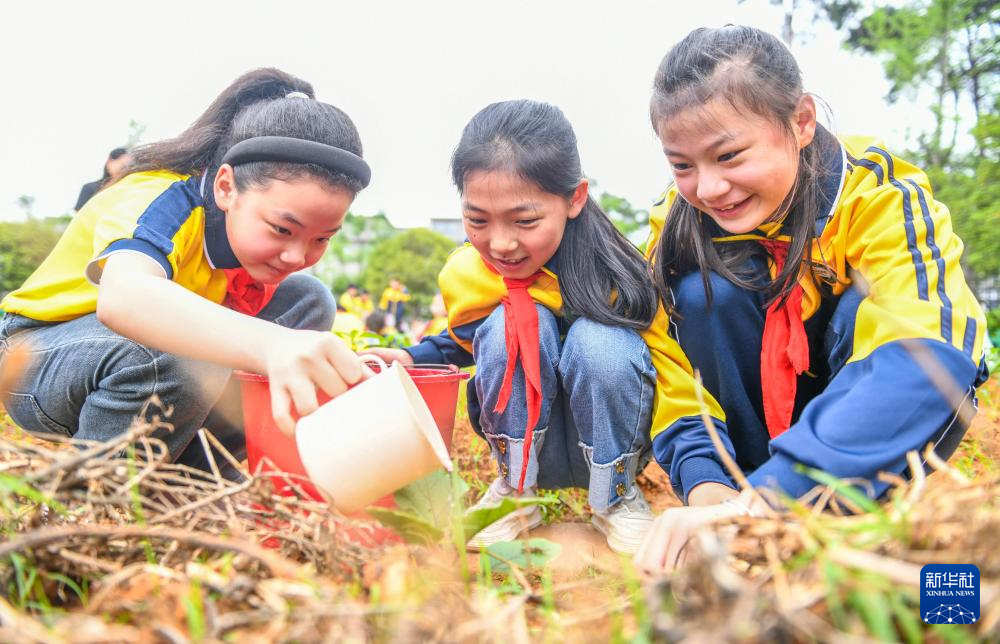Trials of new vacation periods aim to ease student burdens, promote development

Primary school student Chen Mingshan from Lichuan, Hubei province, could barely contain his excitement as he described the first autumn break of his life.
"My parents are going to take me to the countryside, where I can pick tangerines and dig up sweet potatoes," said the 10-year-old fifth-grader joyfully. "The best part is there's no homework. We can have unstructured free time."
As China continues to deepen its education reform, a new initiative is being introduced across the country — spring and autumn breaks for primary and secondary school students.
READ MORE: China further eases students' academic burden
This fresh approach aims to ease academic burdens on students while promoting holistic development through practical experiences outside the classroom.
On Oct 20, the education bureau of Lichuan, Enshi Tujia and Miao autonomous prefecture, announced its first autumn break, scheduled from Nov 3 to Nov 7. Bookended by two weekends, local primary and junior high students will enjoy a nine-day holiday.

Schools are required to uniformly implement the break without unauthorized adjustments or reductions. The bureau explicitly banned assigning any form of written homework or mandatory practical tasks.
"Everyone is thrilled about this extra, homework-free holiday," Chen said.
Xiao Junling, a teacher at Chen's school — Lichuan Second Ethnic Experimental Primary School — said the new arrangement has been welcomed by students and parents, who are making various plans, many both fun and meaningful.
For instance, one student will go to his grandparents' place and learn the process of tea picking and processing, she said.
Another student interested in the local dialect intends to learn Tujia folk songs from his grandparents and record a small "dialect music album".
A group of classmates plan a field trip to the nearby Xingdoushan National Nature Reserve, to document migratory birds and plants and compile a simple research report.
"These activities are excellent. They incorporate local characteristics and provide tangible learning, turning abstract textbook knowledge into something children can touch and feel in real life," Xiao said.
Huang Jie, the father of one student, welcomed the chance for relaxed, off-peak travel, saying that the family can take a leisurely trip and let the children truly unwind.

Policy encouragement
Lichuan's move aligns with a broader policy direction.
In September, nine central government departments, including the Ministry of Commerce, the National Development and Reform Commission, and the Ministry of Education issued measures on expanding service consumption.
The changes encourage localities with suitable conditions to adjust the academic calendar taking into consideration the climate, production schedules and the implementation of paid leave.
It suggests exploring the establishment of spring and autumn breaks, potentially shortening summer and winter vacations, to boost tourism and service consumption during these periods.
During this March's two sessions — the annual gatherings of the National People's Congress and the Chinese People's Political Consultative Conference National Committee — the idea gained national attention.
Pang Yonghui, an NPC deputy from Hebei province, submitted a proposal to institute nationwide spring and autumn breaks for students. "I proposed this mainly for two reasons: to boost the economy and consumption, and to benefit children's growth and education," said Pang, also a Chinese arts and crafts master.
Pang recalled having spring and autumn breaks during busy farming time in his childhood, and noted that today's children face immense academic pressure.
He suggested starting with a one-week "spring break" around the May Day holiday, followed later by an "autumn break", coupled with full implementation of paid leave for workers in enterprises and public institutions to stimulate holiday consumption.
"It became trending news online, showing the topic's broad relevance and public interest," Pang said, expressing satisfaction that his proposal is gaining traction.
Gao Wen, an associate professor of psychology at Liaoning Normal University in Dalian, Liaoning province, said breaks can benefit students' mental and physical health.
"Students are spending long hours in school every day. The two breaks can effectively provide a respite from this rhythm of high-intensity learning, providing necessary relaxation," she said.
"In addition, through recreation and practical work, children interact more with their parents, strengthening family bonds and fostering well-rounded personalities."

Local practice
This year, several cities have begun exploring the new holiday system.
In August, the Enshi Tujia and Miao autonomous prefecture government office issued a notice mandating spring and autumn breaks of at least one week each for compulsory education schools across the prefecture.
Xianfeng county also announced an autumn break from Oct 27 to 31, creating a nine-day holiday period.
Foshan, Guangdong province, announced a three-day autumn break in mid-November and a two-day spring break around May Day for the 2025-26 school year. It offers parents three options: school-organized off-campus activities, family-organized travel, or on-campus care for children unable to participate in other plans.
Data from online travel platform Qunar.com shows a 276 percent year-on-year surge in air ticket bookings from Foshan during the announced break period, with Beijing, Hangzhou, Zhejiang province, and Shanghai the top destinations.
Zigong, Sichuan province, introduced a two-day spring break and three-day autumn break starting this fall. Its guidelines require setting up free tutoring points for those in need. It also encourages local enterprises and institutions to implement paid leave to support parents. Local museums and cultural tourism departments are required to offer free student entry and special "study tour" products.
Yibin in Hubei province also began a three-day spring and autumn break pilot this fall.
Jiangsu province's recent measures to boost consumption encouraged eligible areas to trial breaks by setting the three weekdays before May Day and National Day as spring and autumn breaks, respectively.
Zhejiang is the first province to implement spring and autumn breaks province-wide, with all 11 prefecture-level cities issuing relevant documents.
For over 20 years, Hangzhou has made seasonal travel an option for many families. The city's breaks are typically scheduled in late April and late September, linking with May Day and National Day holidays.

Concerns, challenges
Despite encouragement of such breaks dating back to a 2013 State Council tourism guideline, widespread adoption remains limited.
Responding to a public suggestion for Shenzhen, Guangdong, to implement the breaks on people.com.cn, the city's education bureau cited significant hurdles. A major concern was parents who lack leave, which could lead to unsupervised children or increased reliance on paid tutors, burdening families financially.
Furthermore, meeting curriculum demands for science, sports, mental health and labor education within the existing academic calendar is challenging, and adding breaks could make completing new curriculum standards difficult.
Mu Qiongfang, principal of Lichuan Second Ethnic Experimental Primary School, acknowledged the practical challenges of the new breaks. "Some parents worry that it affects studies or they are unable to arrange meaningful activities. Managing student safety when they are dispersed across various locations is also difficult," Mu said.
She said the school will enhance communication with parents, provide safety reminders before the break and offer guidance when needed. The benefits outweigh the challenges, she said.
"Overall, it's an excellent practice for holistic education. Thinking of the children's smiling faces makes it all worthwhile," Mu said.
Yi Jibing, deputy director of the Enshi education bureau office, emphasized that a successful autumn break requires a support system built by schools, families and society.
He detailed collaborative efforts already taken. The education and agriculture bureaus have co-published a safety guide for farm practices, communities have offered public tutoring classes for families in need while schools have shared activity suggestions online and cautioned against using the break for extra tutoring.
Yi said these details expand the responsibility of education from schools to the whole society.
ALSO READ: Top marks given to 75 years of educational progress
Chang Shufang, an associate researcher at the China National Academy of Educational Sciences, said the breaks create an ideal window for immersive social activities and experiential learning. "This context-based learning is far more vivid and profound than textbook knowledge," she said.
Expanding travel demand outside the highly concentrated summer and winter vacations can significantly increase the frequency and efficiency of annual tourism consumption and activate related service industries, an effect that surpasses simply adding more vacation days, she added.
However, maximizing the benefits depends heavily on supporting safeguards, Chang said.
Schools must design meaningful practical guides, society must provide safe, affordable and quality study-tour resources, and parents need to recalibrate their priorities to value companionship and experience, she added.
"Only when multiple parties truly coordinate can the spring and autumn breaks become a valuable oasis nourishing students' growth," Chang said.
Contact the writers at liukun@chinadaily.com.cn


